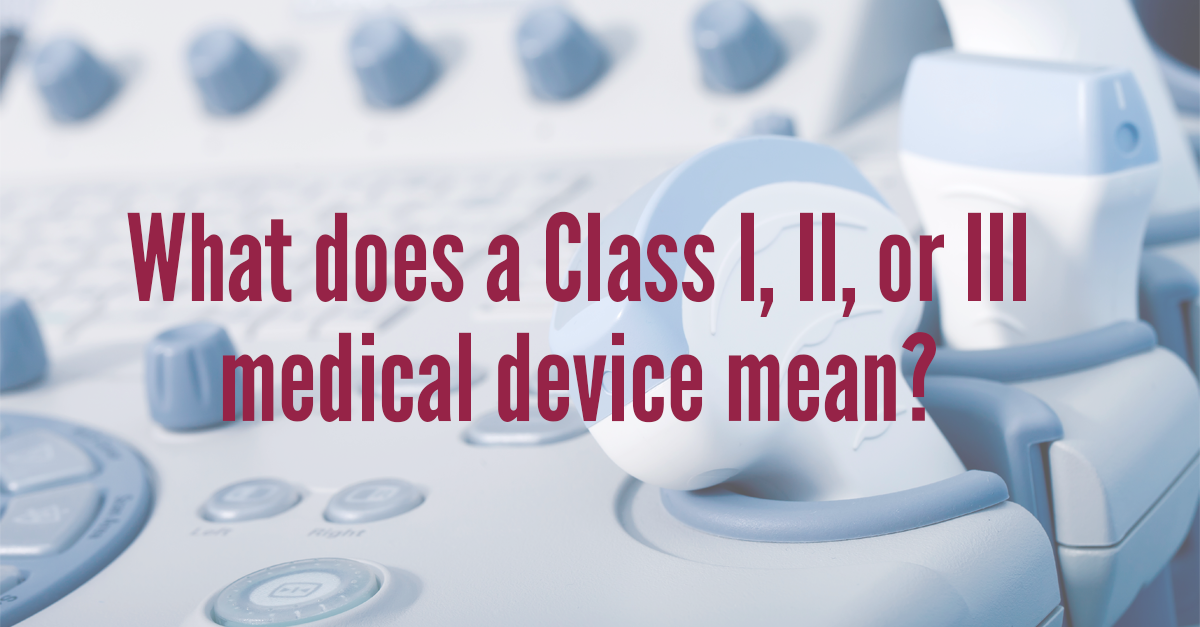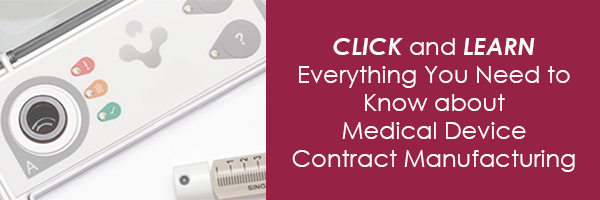Between lifesaving importance, varying complexity, and high demand, medical devices require a unique combination of specific regulations to get much-needed equipment to market. The Food and Drug Administration (FDA) has created a three-tier medical device classification system that companies must follow to get new products approved.
Class I, Class II, and Class III medical devices share some similarities in the regulatory requirements but also have several key differences that manufacturers should be aware of. We'll describe all three and list the criteria for each
Knowing the Differences in Medical Device Classifications
Medical device classifications vary based on several key factors. Among these are risk of patient harm, invasiveness, and intended use. They form different strata that a medical device may fall into, with each one carrying increasing degrees of regulations before the device can be approved. The three regulation types1 are:
- General controls. Unless exemptions are available, these are the most basic regulations applied to medical devices and are valid across Class I, Class II, and Class III devices. They include guidelines for manufacturer registration, misbranded devices, adulterated devices, banned devices, notifications and remedies, reporting, and more.
- Special controls. These apply to Class II devices and mostly vary by the type of device. They include performance standards, design characteristics, premarket data requirements, labeling requirements, guidance documents, and postmarket surveillance.
- Premarket approval (PMA). This category applies to invasive, higher-risk devices. It requires manufacturers to produce extensive scientific deliverables proving the safety and efficacy of the device and related technical material, such as design specifications and other research.
While these controls are typically applied to each device class, exemptions exist for each. For example, some Class I devices are deemed safe enough to qualify for an exemption (bandages, bedpans, etc.), and some Class III devices may only be warranted for a select group of the population due to limited diagnosis data. In these instances, a humanitarian device exemption allows a premarket notification (510(k))2 to be substituted for a PMA.3
Understanding the regulations associated with each class will give manufacturers a clearer understanding of how to bring their devices to market after classification.
First Steps: Specialization
Before you attempt to find which class your medical device falls under, it helps to identify the specialization. The FDA has created 21 CFR Parts 862–8924 to help class each device according to its specialization. The device categories are:
- Clinical chemistry and clinical toxicology
- Hematology and pathology
- Immunology and microbiology
- Anesthesiology
- Cardiovascular
- Dental
- Ear, nose, and throat
- Gastroenterology-urology
- General and plastic surgery
- General hospital and personal use
- Neurological
- Obstetric and gynecological
- Ophthalmic
- Orthopedic
- Physical medicine
- Radiology
After locating the specialization for which a medical device is likely to be used, classification can proceed according to invasiveness, patient risk, and other parameters.
Class I
The least invasive of the three, the FDA defines Class I devices as those "not intended for use in supporting or sustaining life or of substantial importance in preventing impairment to human health, and they may not present a potential unreasonable risk of illness or injury." These general-purpose items are simpler than Class II or III devices and comprise 47% of all medical devices. Some examples are:
- Manual wheelchairs
- Reusable surgical scalpels
- Enema kits
- Elastic bandages
- Hospital beds
- Crutches
- Much more
In addition to fewer regulations, 95% of all Class I medical devices5are eligible for exemptions, further streamlining the approval process.
Class II
Class II medical devices are more complex, invasive, and may present a higher risk of patient harm than Class I items. The FDA defines them as "devices for which general controls are insufficient to provide reasonable assurance of the safety and effectiveness of the device," and they comprise 43% of all medical devices. Some examples are:
- Various catheters
- Blood pressure cuffs
- Certain pregnancy test kits
- Powered wheelchairs
- Syringes
- Blood transfusion kits
- Contact lenses
- Surgical gloves
- Absorbable sutures
Although a 510(k) is the typical form of approval, demonstrating substantial equivalence6 (i.e., adequate functional similarity to a predicate design) can help expedite the approval process for Class II devices.
Class III
The most advanced and invasive medical devices have a Class III status. These comprise 10% of all medical devices and are defined by the FDA as those that "usually sustain or support life, are implanted or present a potential unreasonable risk of illness or injury." Some examples are:
- Breast implants
- Pacemakers
- Defibrillators
- High-frequency ventilators
- Cochlear implants
- Fetal blood sampling monitors
- Implanted prosthetics
Although most Class III devices are in this category because of sophistication or invasiveness, some may be placed in this class for another reason, like a lack of available data. In these cases, a risk-based classification method known as the De Novo classification7 may be used to base the approval process on other criteria, thereby shortening the time to launch.
Crescent Industries is a leading medical device contract manufacturing provider for medical devices of all classes. We have extensive experience in medical device injection molding, cleanroom injection molding, and other medical device manufacturing processes. Contact us to see how we can help you build your Class I, II, or III devices.
Resources:
https://www.fda.gov/medical-devices/overview-device-regulation/regulatory-controlshttps://www.fda.gov/medical-devices/premarket-submissions-selecting-and-preparing-correct-submission/premarket-notification-510k
https://www.accessdata.fda.gov/scripts/cdrh/cfdocs/cfpma/pma.cfm#:~:text=Premarket%20approval%20(PMA)%20is%20the,of%20Class%20III%20medical%20devices
https://www.accessdata.fda.gov/scripts/cdrh/cfdocs/cfcfr/CFRSearch.cfm?CFRPartFrom=862&CFRPartTo=892
https://www.fda.gov/medical-devices/consumers-medical-devices/learn-if-medical-device-has-been-cleared-fda-marketing
https://www.fda.gov/medical-devices/premarket-submissions-selecting-and-preparing-correct-submission/premarket-notification-510k#:~:text=Substantial%20equivalence%20means%20that%20the,or
https://www.fda.gov/medical-devices/premarket-submissions-selecting-and-preparing-correct-submission/de-novo-classification-request#:~:text=De%20Novo%20classification%20is%20a,)%5D%20submissions%2C%20when%20applicable.


